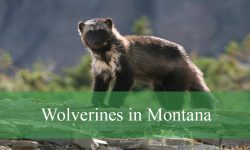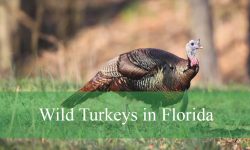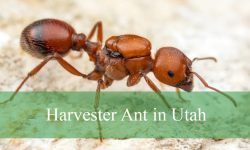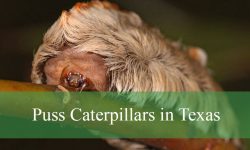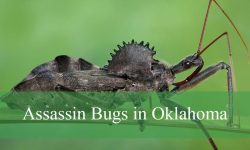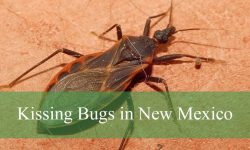Prairie dogs are often seen as charming, social, and sometimes troublesome residents of South Dakota’s mixed-grass prairies. Their upright posture, chirping calls, and bustling colonies are familiar sights across the state’s western landscapes. Yet beneath their seemingly simple lifestyle lies a world of hidden behaviors, ecological influence, and remarkable adaptations that few people fully understand.
South Dakota hosts some of the largest prairie dog towns in North America, particularly within the Badlands, Buffalo Gap National Grassland, Pine Ridge Reservation, and surrounding plains. Their presence is a cornerstone of the prairie ecosystem—supporting dozens of species, shaping plant communities, and influencing predator dynamics. Despite this, they remain one of the most misunderstood mammals in the region, often perceived only as burrowing pests.
This article uncovers seven deep, little-known secrets about prairie dogs in South Dakota, revealing their biology, communication, engineering capabilities, ecological influence, and surprising intelligence. Each secret highlights the complexity of these animals and their vital role in sustaining the state’s prairie ecosystems.
1. Prairie Dogs Speak a Complex Language Few Humans Recognize
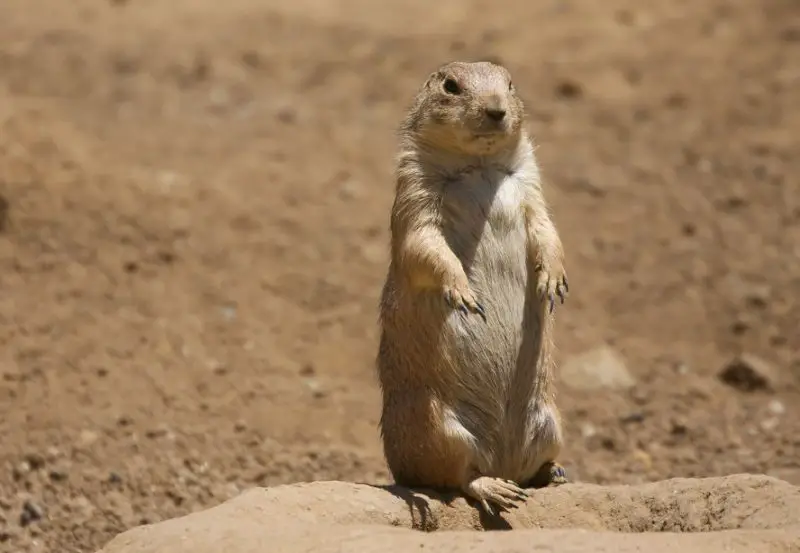
Their Alarm Calls Describe Threats in Remarkable Detail
Prairie dogs don’t simply bark or chirp when danger approaches. Their vocalizations contain nuanced information about predators—including species, size, speed, and direction. Research shows they can differentiate between coyotes, badgers, hawks, and humans, producing slightly altered calls for each threat.
These variations allow colony members to respond appropriately. A call for an aerial predator may send them diving into burrows instantly, while a terrestrial predator may prompt them to stand upright first and assess.
This linguistic complexity rivals that of some primates.
Dialects Vary Between Colonies
Prairie dog colonies across South Dakota develop distinct dialects. Calls from Badlands colonies differ slightly from those in the Black Hills or near Rapid City.
These dialects evolve as family groups communicate over generations, creating micro-cultures within the species. Individuals can recognize and adapt to the dialect of a colony they join, demonstrating impressive auditory learning.
Such cultural transmission is rare among rodents.
Communication Is More Than Sound
Prairie dogs also use body language—tail flicks, jumps, upright poses—and even underground vibrations to communicate danger or reassurance.
This multimodal communication adds layers of meaning to their interactions, helping colonies coordinate activity and maintain social stability.
Their social intelligence plays a major role in colony success.
2. Prairie Dog Colonies Are Engineered Like Underground Cities
Their Tunnels Include Specialized Rooms
Prairie dog burrows are not simple holes in the ground. They contain multiple chambers with designated purposes: nurseries, sleeping quarters, food storage pockets, and escape tunnels.
Gas exchange vents at different depths regulate airflow, preventing suffocation even when dozens of animals occupy the network.
These structural features reflect advanced engineering instincts.
Burrows Provide Microclimates
South Dakota’s harsh temperatures—scorching summers and frigid winters—can be deadly to surface-dwelling animals. Prairie dog burrows maintain stable temperatures and humidity year-round.
This underground insulation protects them from storms, high winds, extreme heat, and predators, making burrows essential for survival in the Great Plains.
Such microclimate engineering allows prairie dogs to occupy environments many rodents cannot.
Their Mounds Protect Against Flooding
Prairie dogs pile soil around burrow entrances to form mounds that deflect rainwater. In South Dakota’s flash-prone prairies, this adaptation prevents flooding during thunderstorms.
The mounds also provide vantage points for sentinels watching for predators, integrating defense and engineering in a single structure.
Each burrow is a carefully designed shelter, not just a home.
3. Prairie Dogs Shape South Dakota’s Prairies More Than Most People Realize
Their Grazing Behavior Influences Plant Communities
Prairie dogs clip vegetation around their burrows to maintain visibility. This selective grazing encourages the growth of certain grasses and forbs, creating patches of low, nutrient-rich vegetation.
These patches attract bison, pronghorn, and deer, which often graze in prairie dog towns for better forage quality.
Prairie dogs thereby increase habitat biodiversity through their feeding habits.
Native Plants Benefit from Their Soil Disturbance
Burrowing activity mixes soil layers, aerating the ground and improving nutrient distribution. This disturbance helps native seeds germinate and promotes the growth of prairie species adapted to open soil.
Their work prevents woody encroachment, helping maintain South Dakota’s grassland ecosystems.
This role makes prairie dogs ecosystem engineers.
Their Towns Support Dozens of Other Species
Prairie dog colonies provide habitat for burrowing owls, rattlesnakes, badgers, swift foxes, black-footed ferrets, insects, and numerous bird species.
In South Dakota, black-footed ferrets—one of the rarest mammals in North America—rely almost entirely on prairie dogs for both shelter and food.
Without prairie dogs, entire prairie-dependent food webs collapse.
4. Prairie Dogs Recognize Individuals and Maintain Social Bonds
They Live in Tight-Knit Family Groups Called Coteries
Each prairie dog town contains smaller social units composed of one or two males, several females, and their offspring. These groups forage together, groom one another, defend shared territories, and raise young cooperatively.
Members recognize each other by scent, sound, and behavior.
This social bonding strengthens colony cohesion.
They Greet One Another With “Kissing” Behavior
When prairie dogs meet, they may press their mouths together or touch incisors in a behavior resembling a kiss. This greeting helps them confirm identity and establish trust.
The gesture reinforces social bonds, much like grooming does in primates.
These subtle interactions reveal their emotional and social complexity.
Social Hierarchy Influences Daily Activity
Dominant males defend territory boundaries, while females often oversee group cohesion. Hierarchies shape who feeds first, who guards, and who interacts with which members.
This structured social system reduces conflict and supports orderly colony life.
Their social behavior is more complex than many people assume.
5. Prairie Dogs Have a Significant Relationship With Predators
They Serve as a Keystone Food Source
In South Dakota, predators such as badgers, golden eagles, coyotes, and ferrets rely on prairie dogs as a primary food source. Entire predator populations expand or contract based on prairie dog abundance.
Their simple presence dictates predator density in large regions.
This makes them crucial to prairie ecosystem stability.
Their Vigilance Reduces Predator Success
Prairie dogs maintain a rotating sentinel system. A few individuals watch from mounds while others forage. If a predator approaches, sentinels alert the colony instantly.
This vigilance drastically lowers predator success rates.
Predators must adapt to prairie dog communication patterns to hunt effectively.
Their Alarm Calls Help Other Species
Species such as pronghorn, deer, and birds often respond to prairie dog alarms. Because prairie dogs detect danger earlier than many animals, their warnings benefit entire communities.
This shared protection illustrates how deeply prairie dogs shape prairie life.
6. Prairie Dogs Impact Human Landscapes More Than Expected
Their Burrows Influence Soil Stability
In natural areas, prairie dog burrowing benefits soil health. However, near human structures—roads, barns, or irrigation ditches—their digging can loosen soil and create erosion issues.
South Dakota ranchers often encounter burrows near grazing land or water channels.
Understanding their ecological role helps balance wildlife needs with land management.
They Compete With Livestock—But Not as Much as Often Believed
Throughout South Dakota, ranchers frequently worry prairie dogs reduce forage availability. While they do consume grasses, their grazing actually stimulates regrowth of high-quality vegetation beneficial to bison and elk.
Studies show that prairie dogs remove only a small percentage of available forage compared with livestock.
The true conflict often stems from visibility and ground disturbance rather than competition.
Human Expansion Shrinks Their Habitat
Development, fencing, and agriculture reduce available prairie dog territory. Colonies once spanning thousands of acres now appear in fragmented patches.
This habitat loss affects not only prairie dogs but also species that rely on them.
Conservation efforts focus on balancing ecological value with land-use needs.
7. Prairie Dogs Are Smarter Than Their Size Suggests
They Demonstrate Problem-Solving Abilities
Prairie dogs navigate complex social environments and make decisions based on risk assessment. They modify behavior based on predator type, weather, and group activity.
Their ability to learn and adjust shows advanced cognitive function for a rodent species.
This intelligence supports survival in South Dakota’s unpredictable habitats.
They Remember Predator Patterns and Human Activity
Prairie dogs observe and remember where threats typically originate—whether from a hawk’s flight path or a human walking route. They adjust burrow placement and vigilance intensity accordingly.
Their memory helps them adapt to expanding human presence.
This spatial awareness reveals deep environmental sensitivity.
Their Young Learn Through Observation
Juveniles watch adults forage, socialize, and respond to danger. Their learning is not purely instinctual; they adopt behaviors from experienced individuals.
This cultural transmission helps maintain colony traditions and survival strategies.
Prairie dogs pass knowledge across generations much like social mammals do.
FAQs About Prairie Dogs in South Dakota
Are prairie dogs dangerous to humans?
They are not physically dangerous, but they can carry diseases. Avoid handling or approaching them closely.
Why do prairie dogs stand upright?
This posture helps them scan for predators and communicate with colony members.
Do prairie dogs harm the environment?
They actually support ecosystems by improving soil health and increasing biodiversity.
Where can I see prairie dogs in South Dakota?
Badlands National Park, Wind Cave National Park, and Buffalo Gap National Grassland are prime viewing locations.
Do prairie dogs hibernate?
No. They remain active year-round, though activity slows significantly in winter.
What eats prairie dogs in South Dakota?
Coyotes, badgers, hawks, eagles, and black-footed ferrets rely on them for food.
Why do some ranchers dislike prairie dogs?
Concerns include soil disturbance, competition with livestock, and potential damage to pastureland.
Are prairie dogs endangered?
Some species are declining due to habitat loss, but they are not federally endangered today.
Conclusion
Prairie dogs in South Dakota are far more than simple burrowing rodents. They are social engineers, ecological architects, and communication specialists whose presence shapes entire landscapes. Their language complexity, underground city design, predator relationships, and contributions to biodiversity make them essential components of the prairie ecosystem.
Understanding their behaviors—and the seven secrets behind their success—reveals a species deeply interconnected with South Dakota’s natural heritage. As conservation and land-use debates continue across the state, recognizing the prairie dog’s ecological importance is crucial for maintaining healthy, resilient prairies for generations to come.

